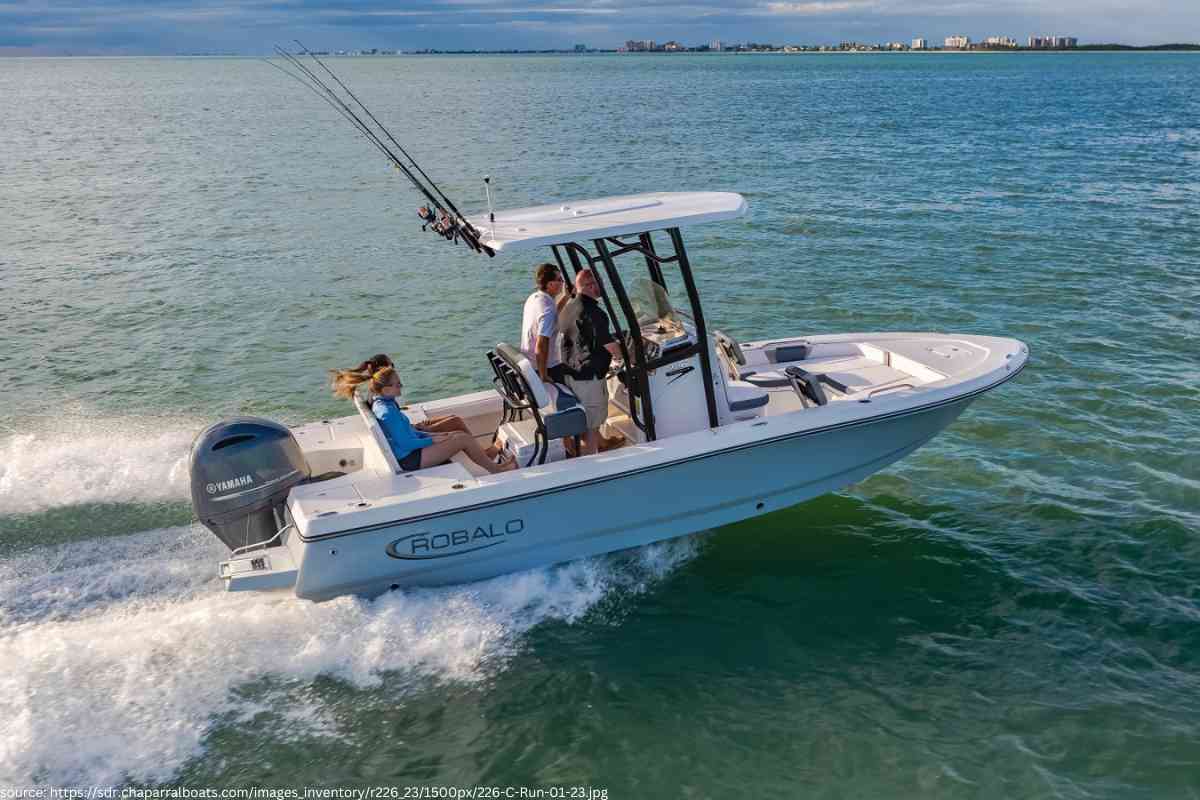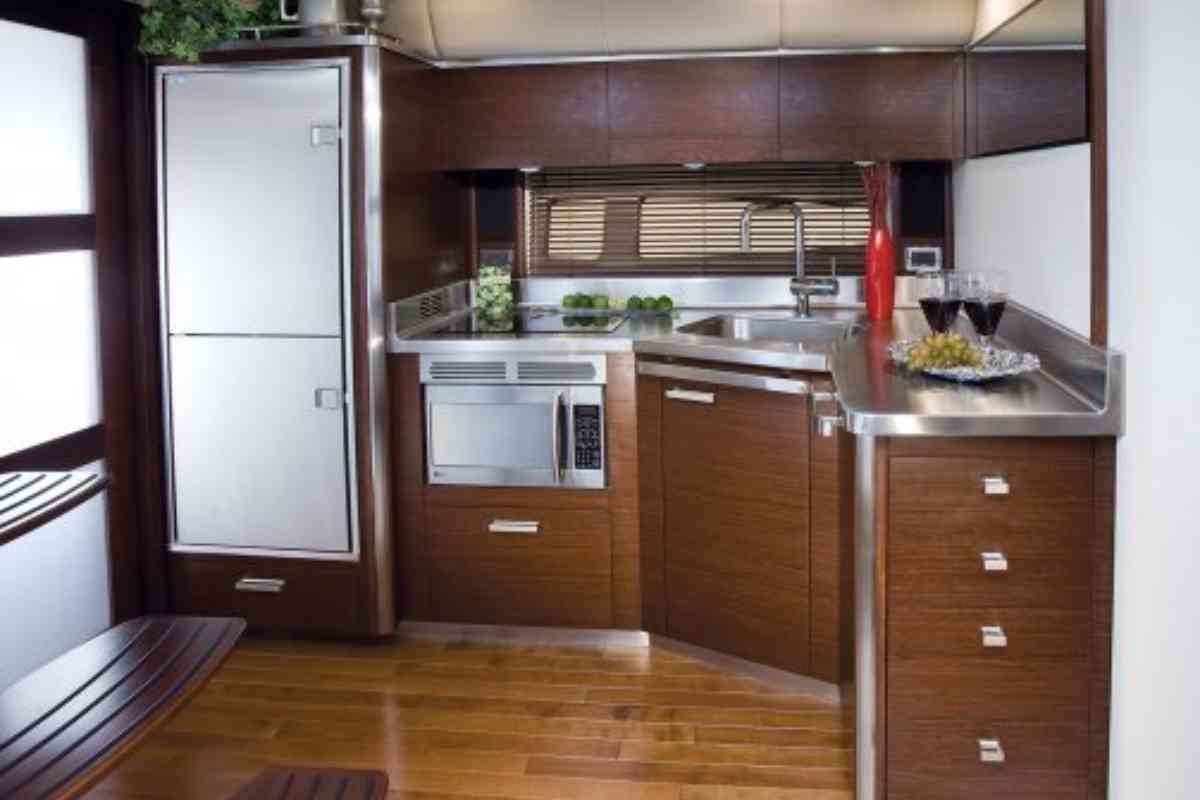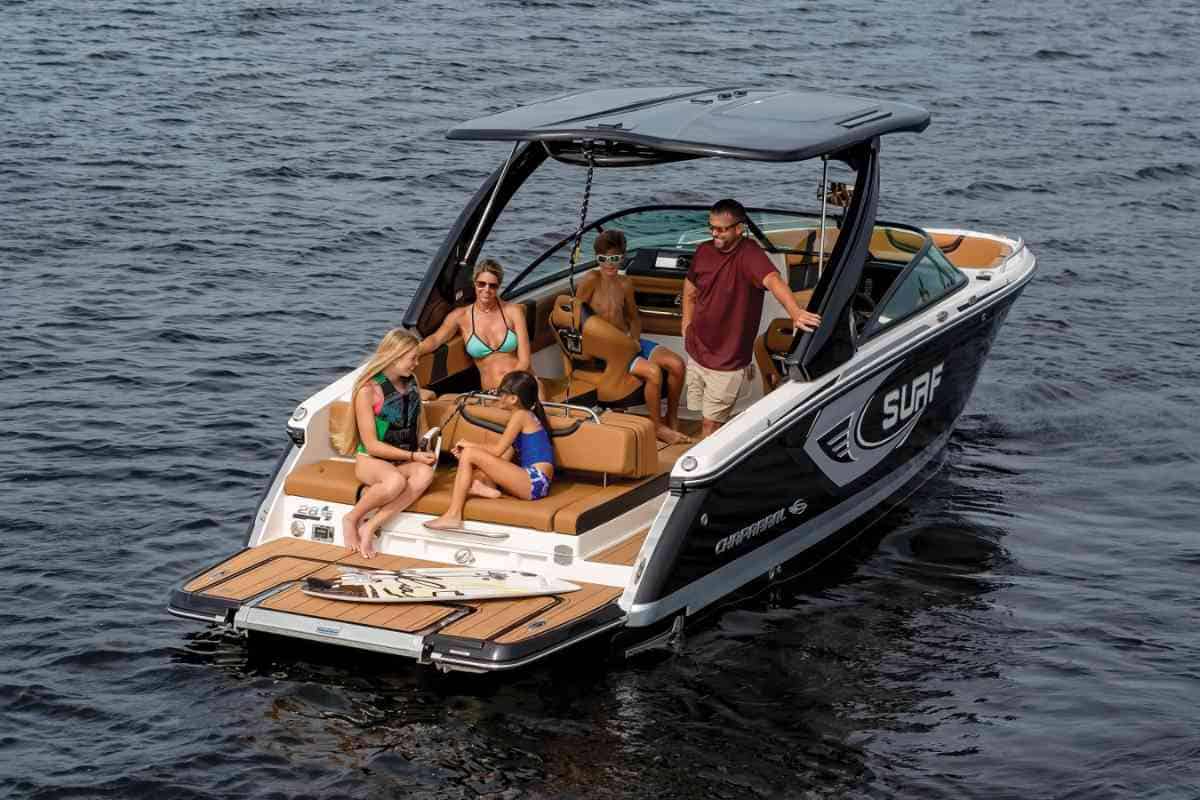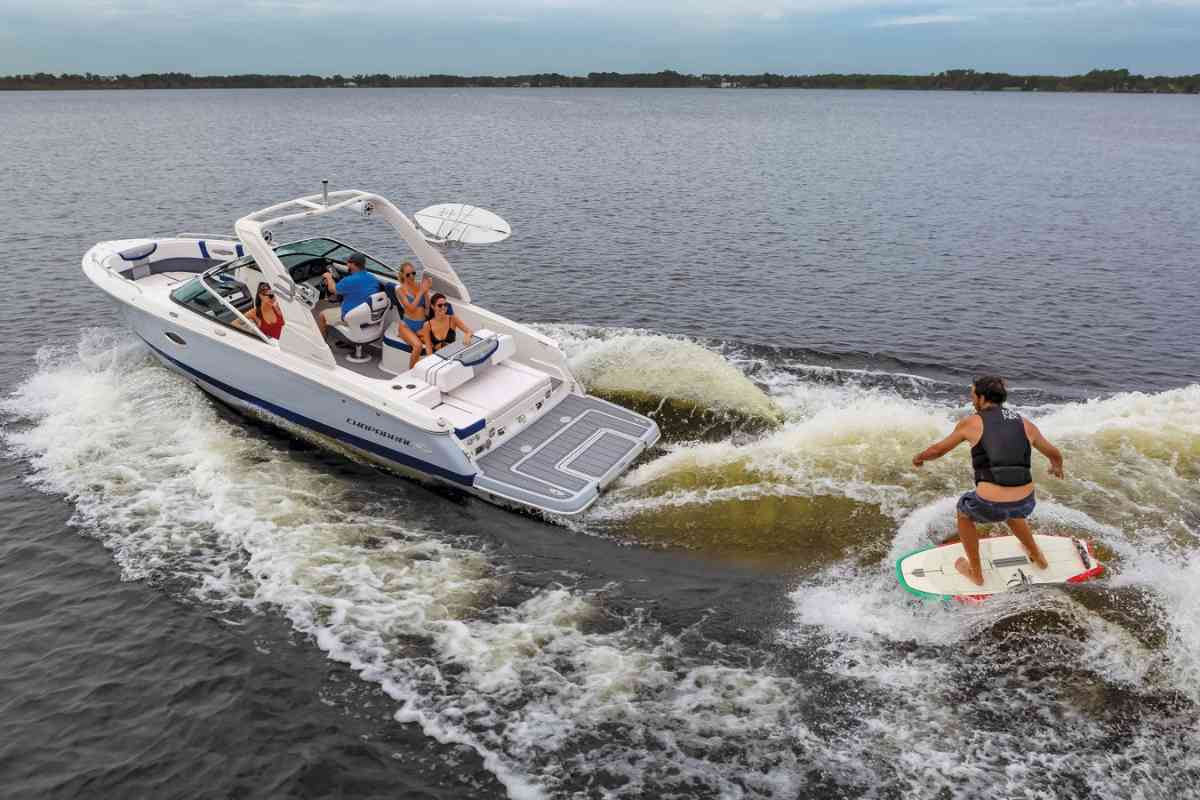What Year Did Chaparral Stop Using Wood in Their Boats?
Chaparral Boats is a well-known brand in the boating industry, and many people are curious about the materials used in their boats. One common question is when Chaparral stopped using wood in their boats. The answer is that Chaparral stopped using wood in their boats in the early 1990s.

When did Chaparral stop using wood in their boats?
Before the early 1990s, Chaparral used wood in their boats for structural support and other purposes. However, as technology advanced, many boat manufacturers began to transition to all-synthetic materials. Chaparral was no exception, and they made the switch to all-synthetic materials in the early 1990s.
This transition allowed Chaparral to produce boats that were more durable, easier to maintain, and more resistant to rot and other types of damage.
Historical Overview of Chaparral Boats
Chaparral Boats is a well-known boat manufacturer based in Nashville, Georgia. The company has a rich history dating back to 1965 when it was founded in Ft. Lauderdale, Florida, by William “Buck” Pegg and Reggie Rose. The company was originally called Fiberglass Fabricators and was known for producing the 15-ft Tri-Hull, which had a sticker price of $675.
Over the years, Chaparral Boats has become a popular boat brand known for its innovative design and high-quality boats. The company has won numerous awards for its boats, including the NMMA Innovation Award, which it won for its Surf Series in 2016.
One significant change in the company’s history was when Chaparral stopped using wood in its boats. The company switched to using all-fiberglass construction in the mid-1980s, which was a significant shift in the industry at the time. This change allowed the company to produce boats that were lighter, stronger, and more durable than their wooden counterparts.
Today, Chaparral Boats is one of the largest boat manufacturers in the United States, with a reputation for producing high-quality boats that are both stylish and functional. The company continues to innovate and push the boundaries of what is possible in boat design, making it a favorite among boaters around the world.

Transition from Wood to Fiberglass
Boat building has come a long way since its inception. The use of wood was a common practice in the early days of boat building, but the introduction of fiberglass revolutionized the industry. The transition from wood to fiberglass took place gradually over several decades, and the reasons for the change were many.
One of the primary reasons for the shift from wood to fiberglass was the durability and longevity of fiberglass. Fiberglass boats are resistant to rot, insects, and other forms of degradation that can occur with wood. Fiberglass boats are also easier to maintain and repair than wooden boats, which require regular maintenance to keep them in good condition.
Another factor that contributed to the shift was the cost-effectiveness of fiberglass. The cost of wood was rising, and fiberglass was becoming more affordable. This made fiberglass boats more accessible to the average consumer.
The transition from wood to fiberglass also brought about changes in boat design. Fiberglass boats could be designed with more complex shapes and curves than wooden boats, which were limited by the available wood sizes and shapes. The use of fiberglass also allowed for the incorporation of features like stringers and hulls that were stronger and more durable than their wooden counterparts.
The transition from wood to fiberglass was a significant milestone in the evolution of boat building. The durability, affordability, and design flexibility of fiberglass made it the preferred material for boat building. Today, fiberglass boats are the norm, and wooden boats are a rare sight.
Comparison with Other Boat Manufacturers
When it comes to boat manufacturing, there are many players in the market. Here is a comparison of Chaparral with some of the other popular boat manufacturers.
Brunswick
Brunswick is a leading boat manufacturer that produces a wide range of boats, including Bayliner, Sea Ray, and Boston Whaler. Brunswick has been using fiberglass in their boats since the 1960s, and they have gradually phased out the use of wood. The company is committed to using sustainable materials and practices in their manufacturing process.
Bayliner
Bayliner is a popular boat brand that is known for its affordable and versatile boats. The company has been using fiberglass in their boats since the 1980s, and they have phased out the use of wood in their manufacturing process.
Four Winns
Four Winns is a well-known boat manufacturer that produces a range of boats, including bowriders, cruisers, and deck boats. The company has been using fiberglass in their boats since the 1960s, and they have gradually phased out the use of wood.
Glastron
Glastron is a popular boat brand that produces a range of boats, including deck boats, bowriders, and cruisers. The company has been using fiberglass in their boats since the 1960s, and they have phased out the use of wood in their manufacturing process.
Larson
Larson is a well-known boat manufacturer that produces a range of boats, including bowriders, deck boats, and cruisers. The company has been using fiberglass in their boats since the 1960s, and they have phased out the use of wood.
Grady White
Grady White is a high-end boat manufacturer that produces a range of boats, including center consoles, dual consoles, and express cabin boats. The company has been using fiberglass in their boats since the 1960s, and they have phased out the use of wood.
Angler
Angler is a boat manufacturer that produces a range of center console boats. The company has been using fiberglass in their boats since the 1980s, and they have phased out the use of wood.
Cobia
Cobia is a popular boat brand that produces a range of boats, including center consoles and dual consoles. The company has been using fiberglass in their boats since the 1960s, and they have phased out the use of wood.
Key West
Key West is a boat manufacturer that produces a range of center console boats. The company has been using fiberglass in their boats since the 1980s, and they have phased out the use of wood.
Venture
Venture is a boat manufacturer that produces a range of center console boats. The company has been using fiberglass in their boats since the 1980s, and they have phased out the use of wood.
Overall, most boat manufacturers have phased out the use of wood in their manufacturing process and have switched to using fiberglass. Chaparral is no exception and has been using fiberglass in their boats since the 1980s.
Impact on Boat Durability and Design

The shift from wood to other materials, such as fiberglass and aluminum, had a significant impact on the durability and design of boats. While wood was a popular material for boat construction for many years due to its availability and ease of use, it was not the most durable material, especially in harsh marine environments.
Fiberglass, for example, is a highly durable and corrosion-resistant material that allows for innovative boat designs. It is also lightweight, which improves fuel efficiency and speed. Chaparral Boats, in particular, made the switch to fiberglass in the 1980s, which allowed them to create new and innovative designs that were not possible with wood.
Composite materials, which combine different materials to create a stronger and more durable material, are also being used in boat construction. These materials offer the best of both worlds, with the strength and durability of metal and the lightweight and corrosion-resistant properties of fiberglass.
The shift away from wood has allowed for more durable and innovative boat designs that can withstand harsh marine environments. By using materials such as fiberglass and composites, boat manufacturers can create boats that are not only more durable but also more fuel-efficient and faster.
Common Problems and Solutions
Chaparral boats are known for their quality and durability, but like any other boat, they can experience some common problems. Below are some of the most common problems with Chaparral boats and their solutions.
Moisture
One of the most common problems with Chaparral boats is moisture. Moisture can cause rotting and other damage to the boat. To prevent moisture from building up on your boat, make sure to keep it clean and dry. If you notice any signs of moisture, such as mold or mildew, take action immediately to prevent further damage.
Rotting
Rotting is another common problem with Chaparral boats. Rotting can occur when moisture builds up on the boat and is left untreated. To prevent rotting, make sure to keep your boat clean and dry. If you notice any signs of rotting, such as soft spots or discoloration, take action immediately to prevent further damage.
Common Problems

Below are some of the most common problems with Chaparral boats and their solutions:
- Horn Not Working: Check the wiring and connections to make sure they are secure and functioning properly. If necessary, replace the horn.
- Shifting Issues: Check the shift cable and linkage to make sure they are functioning properly. If necessary, replace the cable or linkage.
- Problem With Locks and Doors: Check the locks and doors to make sure they are functioning properly. If necessary, replace the locks or doors.
- Caulking: Check the caulking around the boat to make sure it is intact and not cracked. If necessary, re-caulk the boat.
- Not Good for Water Sports: Chaparral boats are not designed for water sports, so if you plan on using your boat for water sports, you may want to consider a different boat.
- Not Family-friendly: Chaparral boats are not designed for families, so if you plan on using your boat for family outings, you may want to consider a different boat.
- Leaking Gas Tanks: Check the gas tank to make sure it is not leaking. If necessary, replace the gas tank.
- Issues With Radio and Speakers: Check the wiring and connections to make sure they are secure and functioning properly. If necessary, replace the radio or speakers.
- Loose Screws: Check all screws and bolts on the boat to make sure they are tight and secure. If necessary, tighten or replace the screws or bolts.
- Not Backing Warranty: Chaparral boats come with a warranty, but make sure to read the fine print to make sure you understand what is covered and what is not covered.
- Throttle: Check the throttle to make sure it is functioning properly. If necessary, replace the throttle.
- Issues with Seats: Check the seats to make sure they are functioning properly. If necessary, replace the seats.
Chaparral boats are known for their quality and durability, but like any other boat, they can experience some common problems. By taking care of your boat and addressing any issues immediately, you can ensure that your Chaparral boat will last for many years to come.
Pros and Cons of Chaparral Boats
Chaparral Boats are known for their luxurious designs and affordable prices. However, like any other boat brand, Chaparral has its pros and cons. Here are some of the advantages and disadvantages of owning a Chaparral Boat:
Pros
- Stable Ride: Chaparral Boats are designed with a deep-V hull that provides a stable ride even in rough waters. This makes them a great choice for boaters who enjoy water sports or fishing.
- Resale Value: Chaparral Boats have a good resale value due to their high-quality construction and durability. This makes them a smart investment for those who plan to sell their boat in the future.
- Budget: Chaparral Boats offer a range of models with varying prices, making them accessible to boaters on a budget. This allows more people to enjoy the luxury and comfort of a Chaparral Boat.
Cons
- Reviews: Some boaters have reported issues with Chaparral Boats, such as under-powered motors, shifting problems, and issues with locks and doors. However, it’s important to note that every boat brand has its share of negative reviews.
- Wood Use: In the past, Chaparral Boats used wood in their construction, which can lead to rot and decay over time. However, Chaparral stopped using wood in their boats in the mid-1990s, so this is no longer a concern for newer models.
Chaparral Boats are a great choice for boaters who value stability, durability, and affordability. While there may be some negative reviews, it’s important to do your research and choose a model that fits your needs and budget.
Conclusion
After conducting research and analyzing the available information, it appears that Chaparral stopped using wood as a structural material in their boats sometime in the late 1980s or early 1990s. While there is no exact date available, it is clear that the transition from wood to other materials, such as fiberglass, was a gradual one.
It is worth noting that the use of wood in boat construction has declined significantly over the years due to concerns about durability, maintenance, and safety. Many boat manufacturers have switched to using more modern materials that are lighter, stronger, and easier to maintain.
Overall, while the exact date of Chaparral’s transition away from wood is not known, it is clear that the company has moved towards using more modern materials in their boats. This is a trend that is likely to continue as boat manufacturers seek to improve the performance, safety, and longevity of their products.
Frequently Asked Questions
When did Chaparral switch from wood to fiberglass construction?
Chaparral began transitioning from wood to fiberglass construction in the late 1980s and early 1990s. This was a common trend in the boat manufacturing industry at the time, as fiberglass offered many advantages over wood, including increased durability and ease of maintenance.
At what point did Chaparral stop using wood in their boat manufacturing process?
Chaparral stopped using wood in their boat manufacturing process in the early 1990s. This was a gradual transition, with some models continuing to use wood for a few years after others had switched to fiberglass.
When did Chaparral shift to using non-wood materials in their boats?
Chaparral began using non-wood materials in their boats in the early 1990s, when they began transitioning from wood to fiberglass construction. Today, Chaparral uses a variety of materials in their boats, including fiberglass, aluminum, and stainless steel.
